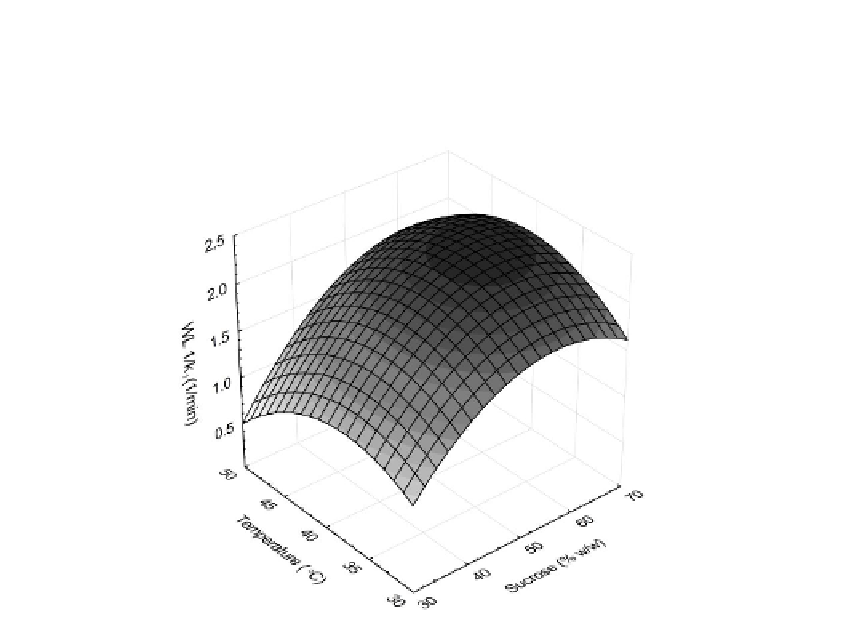Agriculture Reference
In-Depth Information
that can be attributed to the changes in the cell membrane structure at higher temperatures. On
the other side positive interaction between two independent variables (sucrose concentration
and temperature, reported in Table 2.) although small permit to asses that there is synergetic
effect.
Figure 1. Effects of sucrose concentration and temperature on water loss initial rate.
At equilibrium water loss is positively influenced by increase in sucrose concentration,
but in this case concentrations above 60% w/w, did not promote further water loss (Figure 2.).
Single effect of temperature on the water loss at equilibrium was the same as for initial water
loss rate as higher temperatures tend to promote increase in water loss. One of the possible
explanations for this can be found in the structure of the plant tissue. Sugar beet tissue has
porous structure and at higher temperatures trapped air from the plant tissue during osmotic
dehydration can be released which in turn may promote water removal by solution osmotic
pressure.
Another reason for this behavior is in fact that higher temperatures cause swelling and
plasticizing of cell membrane, in that way membrane becomes more permeable to water
coming out of the product (Saputra, 2000). In the same time higher temperatures lower the
osmotic solution viscosity which results in better water transfer characteristics on the product
surface, i.e., the water diffusion is more rapid (Contreras & Smyral, 1981). Decrease in
equilibrium WL values was observed for temperatures above 40
o
C. Probable explanation for
this may be the structural modifications of sugar beet tissue due to long contact with osmotic
solution at high temperatures. An interaction between sucrose concentration and temperature
has opposite effect to the water loss at equilibrium when compared to interaction effect at the
water loss initial rate. As it can be seen in Table 2., negative interaction between these two
variables the conclusion that there is an antagonistic effect, may be drawn. The simultaneous
increase of sucrose concentration and temperature may cause the decrease of equilibrium
water loss during osmotic dehydration process.

